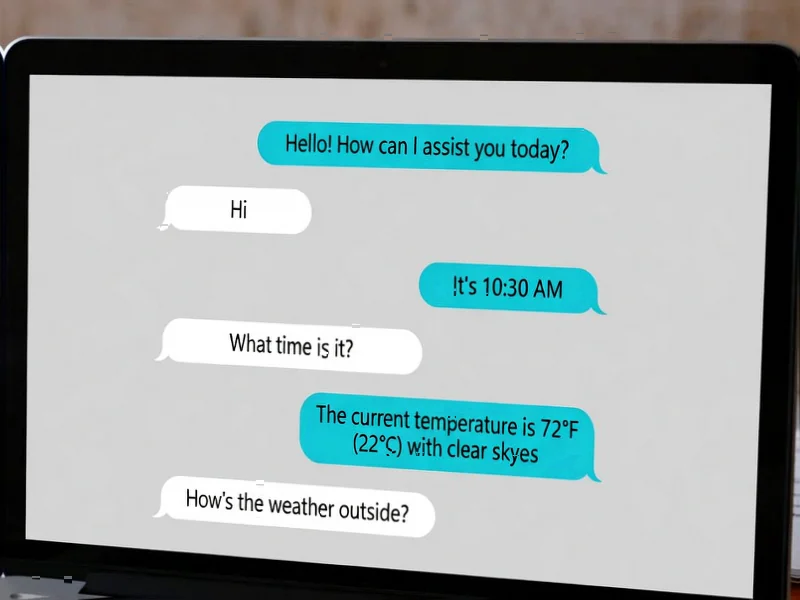According to AppleInsider, Apple researchers have published a new paper titled “Pico-Banana-400K: A Large-Scale Dataset for Text-Guided Image Editing” that addresses fundamental limitations in current AI image editing systems. The research argues that despite impressive capabilities from systems like GPT-4o and Nano-Banana, the AI community lacks “large-scale, high-quality, and openly accessible datasets built from real images.” In response, Apple has released Pico-Banana-400K, a comprehensive 400,000-image dataset organized by a 35-type editing taxonomy that includes single-turn edits, multi-turn edit sequences, and preference pairs comparing successful and failed results. The dataset is freely available for non-commercial use and represents Apple’s latest in a series of significant AI research publications in 2025, following earlier studies on AI reasoning limitations and bug detection in code. This development comes as Apple continues to challenge assumptions about being behind in AI research while simultaneously improving consumer-facing features like Image Playground with ChatGPT integration in June 2025.
Table of Contents
The Training Data Crisis in AI Image Editing
What Apple’s research team has identified is essentially a training data crisis in artificial intelligence image editing. Most current systems are trained on synthetic or limited datasets that don’t reflect the complexity of real-world editing scenarios. This creates a fundamental gap between what users expect and what AI can deliver. When models learn from artificial or homogeneous data, they struggle with edge cases, diverse artistic styles, and the nuanced understanding required for professional-grade edits. The problem isn’t just about quantity—it’s about the quality and diversity of training examples that reflect actual user intentions and the full spectrum of editing operations people perform on real images.
Why This Matters Beyond Research Papers
This release represents a sophisticated strategic move by Apple Inc. that extends far beyond academic publishing. By creating and open-sourcing a high-quality dataset, Apple positions itself as a standards-setter in an increasingly competitive AI landscape. The timing is particularly significant as the company prepares to integrate more advanced AI features across its ecosystem. Rather than simply building proprietary models, Apple is contributing to the foundational infrastructure that will shape future AI development. This approach mirrors how successful tech companies have historically influenced markets—by defining the building blocks everyone else uses. The non-commercial license also strategically balances openness with commercial protection, allowing academic and research adoption while preserving potential future advantages.
The Technical Innovation in Dataset Construction
The methodology described in their research paper reveals several technical innovations that distinguish Pico-Banana-400K from previous efforts. The systematic approach to quality and diversity includes something crucial: preference pairs that show both successful and failed edits. This teaches models not just what to do, but what to avoid—a critical element often missing in AI training. The multi-turn edit sequences also reflect real-world editing workflows where users make iterative adjustments rather than single commands. By including both single-turn and multi-turn examples, the dataset captures the full spectrum of user behavior. The 35-category taxonomy ensures comprehensive coverage of editing operations rather than focusing only on popular or simple transformations.
Broader Industry Implications
This development could significantly impact how image editing AI systems are developed across the industry. Companies like Adobe, Midjourney, and Stability AI now have access to a high-quality benchmark dataset that could accelerate model improvement. However, it also raises the competitive bar—Apple has effectively defined what constitutes a comprehensive training set, forcing others to match their standard or explain why they’re falling short. The release could also influence how regulatory bodies view AI training data quality, potentially establishing new expectations for transparency and comprehensiveness in dataset construction. As AI systems become more integrated into creative workflows, the quality of their training data becomes increasingly consequential for both performance and ethical considerations.
The Challenges and Limitations Ahead
Despite the dataset’s sophistication, significant challenges remain in AI-powered image editing. Scale alone doesn’t solve deeper architectural limitations in how current models understand spatial relationships and artistic intent. There’s also the persistent issue of model generalization—systems trained on even the best datasets can struggle with completely novel editing requests or highly specialized domains. The computational resources required to train on 400,000 high-quality examples also create barriers for smaller research teams and startups. Additionally, as Apple makes the dataset available through their GitHub repository, questions arise about long-term maintenance, versioning, and how the community will contribute to its evolution.
What This Means for Apple’s AI Future
This research publication suggests Apple is playing a much longer game in AI than surface-level comparisons with competitors might indicate. While companies like Google and OpenAI focus on consumer-facing chatbot interfaces, Apple appears to be systematically addressing foundational problems in AI development. Their 2025 research portfolio—from reasoning limitations to software bug detection to now image editing datasets—reveals a comprehensive approach to AI research rather than chasing individual product features. This dataset release specifically positions Apple to influence how image editing AI evolves, potentially giving them architectural advantages when these technologies eventually integrate into Photos, iMovie, and creative applications across their ecosystem. The chemical analogy in the naming (extending from Nano to Pico) suggests they view this as part of a systematic scaling down to more fundamental building blocks of AI capability.


